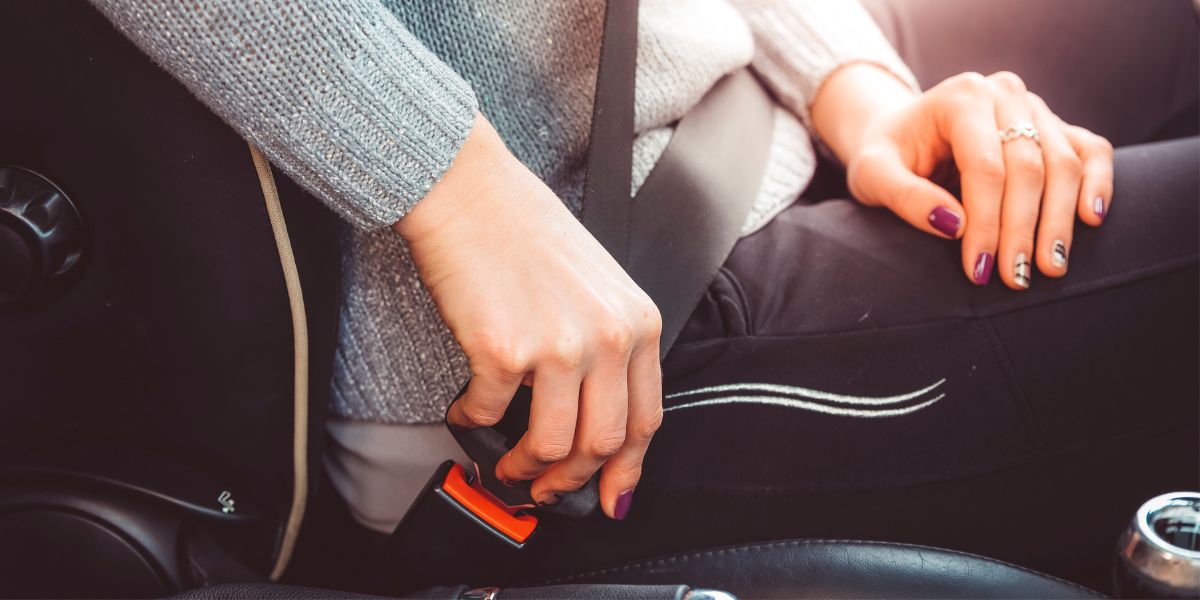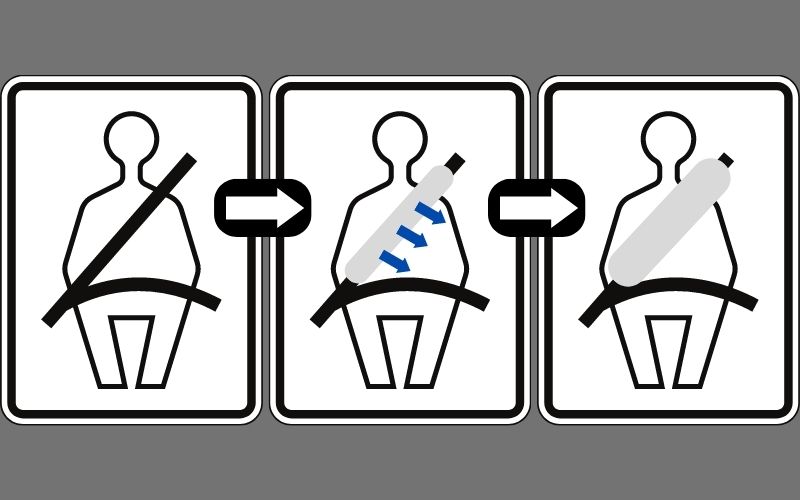When you’re on the lookout for a new car, you may see one that’s advertised as having inflatable seatbelts. And if you’ve never heard of them before, you might wonder what they are.

So to clear it up, let’s take a look at everything you need to know about inflatable seatbelts, including what they do and which cars have them.
What Are Inflatable Seat Belts?
Inflatable seatbelts are seatbelts with the ability to inflate in the case of impact, serving as a type of built-in airbag. They have an inflatable shoulder pad that can also help to minimize the risk of neck and head injuries if you have a crash.
The purpose of a regular seat belt is to protect you in a crash by preventing you from flying forwards, either hitting your head on the dash or the seats in front of you, depending on when you’re sitting.
And many cars also come equipped with airbags to cushion any impact, helping to protect you from injuries.
Inflatable seat belts are just devices that do both jobs at once. In a crash, they’ll inflate immediately to not only keep you pinned to the seat safely, but to also cushion your chest, ribcage, and your vulnerable neck and head.

How Do Inflatable Seat Belts Work?
Inflatable seat belts work in the same way as airbags – they are triggered when there is a sudden, violent impact in the vehicle. Sensors detect the impact, and within milliseconds the seatbelt will unfurl and self-inflate, helping to protect you from injury.
They’re extremely fast – taking around 40 milliseconds on average – so you can’t really see them working unless you watch it in slow motion. Before you’ve even had a chance to potentially be thrown forward in your seat, the strap will have fully inflated. They are slower than an airbag, but not by much.
Once the vehicle has settled, the seatbelt will slowly deflate through its pores, so you aren’t left completely pinned in place.
According to manufacturers, inflatable seat belts have two benefits – they keep you held tighter, which limits the possibility of you being thrown forwards, and they also spread out the impact of a crash.
Normally you’d take the brunt of it through the small seat belt strap, but an inflatable strap spreads the force across up to five times more of the chest, so you feel it less.
When is an Inflatable Seatbelt Not Suitable?
Inflatable seatbelts must be worn across the chest. If they are worn across the neck, they can suffocate the wearer once inflated. This means they are not suitable for young children. They are also not compatible with some child car seats.
If you are using a child’s car seat, it’s always preferable to use the LATCH system instead of securing it with a seatbelt, so aim to use that instead if you can and your child is within the weight limits.
Otherwise, check with your car seat manufacturer on whether they are suitable for use with inflatable car seat belts. Some manufacturers, like Chicco, don’t allow inflatable seat belts to be used. Others say that they work with certain models.

Can You Turn Off Inflatable Seat Belts?
You can disable an inflatable seat belt. All you need to do is disconnect it from the sensor. Normally they are plugged into the sensor under the seat, although if you can’t find it then check the manual for your vehicle.
You might want to disable it for children who aren’t quite tall enough, or if you need to install a child’s car seat that isn’t compatible with an inflatable seat belt. The seat belts work as normal once disabled, so just unplug them from the sensor and then they’ll work with any car seat.

Which Vehicles Have Inflatable Seat Belts?
Inflatable seat belts were first introduced by Ford in 2011 and are now also available on selected Lincoln and Britax cars. Some Mercedes Benz cars also have them – they are called belt bags.
With Ford, they are normally available on F-150, Fusion, Edge and Flex models. You’ll only find them on used cars though – Ford has stopped making them available on new models.
For Lincoln, you can normally get them added to MKT, MKZ and MKX vehicles.
With Mercedes Benz, it tends to be the S600 that they’re available on.
Inflatable seat belts or belt bags are almost always an optional extra – they don’t come as standard when you buy the car. They aren’t always available too, so check with your car dealer.
Are Inflatable Seat Belts Safe?
Inflatable seat belts are considered safe, provided they are used correctly by anyone who is tall enough. If the inflatable seat belt cuts across the neck then they become unsafe, as they can damage the neck rather than protect it.
There are many other seat belt technologies being developed that have the same benefits, and Ford has moved away from inflatable seat belts for now with their new cars. That doesn’t mean they aren’t safe though – just that there are other options that are either safer or more cost-effective.

Final Word
Inflatable seatbelts are definitely a useful addition to a car if you want to protect yourself during a collision. They’re not extremely common, but don’t let that put you off them – they are safe to use and they do protect you more in a crash.
If you are buying a car and have the option of inflatable seat belts, I would definitely consider adding them if the cost isn’t too prohibitive.
